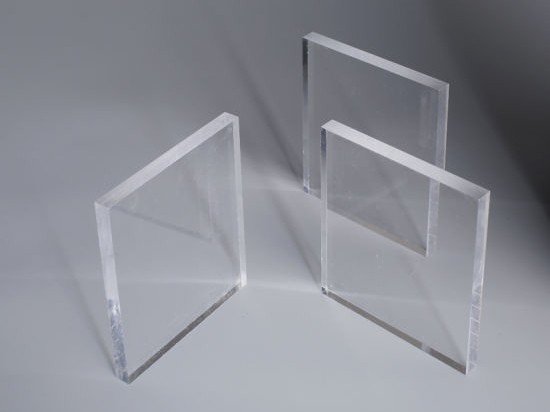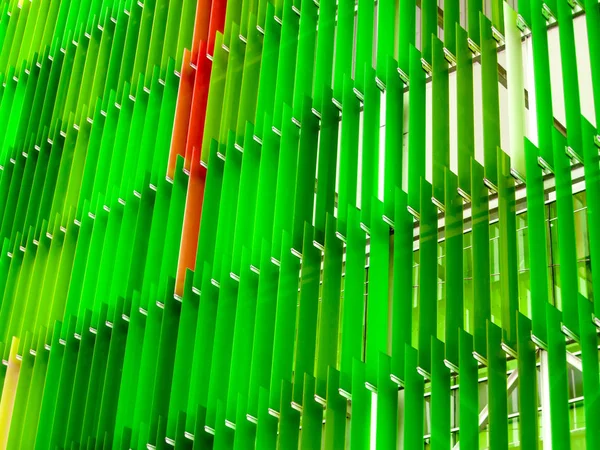When it comes to choosing the perfect material for your next project, there are a plethora of various options available. But two of the most popular materials used in the world of fabrication and design are cast and extruded acrylic. These two materials both offer unique advantages, but each also comes with its own set of drawbacks.
Cast acrylic is produced by pouring liquid acrylic into a mold and allowing it to cure, resulting in superior optical clarity and greater thickness availability, but it is more expensive than extruded acrylic that is produced by melting acrylic resin and forcing it through a die to create a continuous sheet. Extruded cast is lower in cost but has a greater impact resistance due to its less dense molecular structure. However, the choice between cast and extruded acrylic will depend on your specific needs of the application.
In this article, I will explore more in depth about these two materials, highlighting their unique properties and applications. Whether you are a seasoned professional or just starting out , this article will help you make an informed decision on which one is right for your needs.
Related Reading
Top 10 Best Acrylic Fish Tanks in 2023
Differences Between Cast and Extruded Acrylic

Cast and extruded acrylic are two of the most popular materials used in the world of fabrication and design. Each material has its own unique properties, advantages, and drawbacks, making them suitable for different applications. Here are some of the key differences between cast and extruded acrylic, explained in depth:
1) Manufacturing Process
The primary difference between cast and extruded acrylic is in their manufacturing process. Cast acrylic is manufactured by pouring a liquid acrylic resin into a mold, which is then allowed to cure into a solid sheet. This process results in a denser and more uniform sheet of acrylic with a higher molecular weight.
On the other hand, extruded acrylic is manufactured by pushing a heated block of acrylic resin through a die, resulting in a continuous sheet that is then cooled and cut to size. This process results in a sheet with a slightly lower molecular weight and a more consistent thickness.
2) Optical clarity
Optical clarity is an important factor to consider when choosing between cast and extruded acrylic. Cast acrylic is known for its superior optical clarity compared to extruded acrylic. This is because the casting process allows for the liquid acrylic to settle and form more uniformly, resulting in a denser, more homogeneous sheet.
During the casting process, the liquid acrylic is poured into a mold and left to cure into a solid sheet. This process allows for the removal of impurities such as bubbles, air pockets, and dust particles. The casting process produces a denser and more uniform molecular structure, which results in less internal stress and fewer distortions in the final product. The resulting sheet has a high-quality, glass-like appearance with excellent optical clarity, making it a popular choice for applications that require clear or transparent materials, such as aquariums, display cases, and optical lenses.
On the other hand, extruded acrylic may have slight imperfections due to the extrusion process, which results in slight waves or ripples in the sheet. During the extrusion process, the acrylic resin is melted and then forced through a die to create a continuous sheet. This process can introduce air pockets or other impurities that can cause slight waves or ripples in the sheet. These slight imperfections can lead to distortion and reduced optical clarity in the final product.
Overall, the casting process used to produce cast acrylic allows for greater control over the molecular structure of the sheet, resulting in a higher-quality product with superior optical clarity. While extruded acrylic may be more economical, it may not be the best choice for applications that require high optical clarity. Cast acrylic is the preferred choice for applications that require superior visual appeal and performance.
3) Workability
Cast acrylic is more brittle than extruded acrylic, which makes it more prone to cracking or shattering during fabrication. However, it can be machined and polished to a higher degree of clarity, and it can be cast into more complex shapes. Extruded acrylic is more flexible and can be bent, thermoformed, and routed more easily than cast acrylic.
4) Cost
Extruded acrylic is generally less expensive than cast acrylic, making it a more economical choice for larger projects. Here are some of the reasons why:
- Higher density and optical clarity: Clearly , cast acrylic has a higher density than extruded acrylic, which makes it more durable and resistant to cracking and chipping. Additionally, cast acrylic has a better optical clarity due to its uniform molecular structure, which makes it an ideal choice for applications that require high-quality visual appeal. This higher density and optical clarity come at a cost, making cast acrylic more expensive than extruded acrylic.
- Production process: The production process for cast acrylic is more complex and time-consuming than extruded acrylic. In the casting process, liquid acrylic is poured into a mold and left to cure into a solid sheet, which can take several hours to complete. Extruded acrylic, on the other hand, is produced by pushing a heated block of acrylic resin through a die, which produces a continuous sheet that is then cut to size. The simpler production process for extruded acrylic makes it less expensive than cast acrylic.
- Lower availability: Cast acrylic is not produced in the same quantities as extruded acrylic, which can make it more expensive due to lower supply and higher demand. This is particularly true for thicker sheets of cast acrylic, which are less commonly available than extruded acrylic sheets of similar thickness.
5) Applications
Cast acrylic and extruded acrylic have different physical properties, which make them more suitable for specific applications. Here are applications where cast acrylic is commonly used:
- Displays and signage: Cast acrylic is commonly used in displays and signage due to its high optical clarity, which allows for clear and precise text and images. It is often used for point-of-sale displays, exhibition stands, and backlit signs.
- Aquariums: Cast acrylic is the material of choice for aquariums due to its superior optical clarity and durability. It is more resistant to cracking and chipping than glass and provides excellent visibility of the aquatic environment.
- Optical lenses: Cast acrylic is used for optical lenses due to its superior optical clarity and light transmission. It is used for applications such as eyeglasses, camera lenses, and telescopes.
Extruded acrylic is often used in applications where durability, weather resistance, and cost are more important than optical clarity. Here are some applications where extruded acrylic is commonly used:
- Outdoor signage: It is commonly used for outdoor signage due to its durability and weather resistance. It is resistant to fading, cracking, and chipping, making it ideal for outdoor use.
- Window glazing: Extruded acrylic is also used for window glazing due to its shatter-resistant properties. It is a safer alternative to glass and is used for applications such as skylights and roof glazing.
- Protective barriers: This type of acrylic is used for protective barriers due to its durability and shatter-resistant properties. It is used for applications such as safety shields, machine guards, and sneeze guards.
Overall, the choice between cast acrylic and extruded acrylic will depend on the specific needs of the application. However, cast acrylic is preferred for applications where optical clarity and high-quality appearance are important, while extruded acrylic is preferred for applications where durability, weather resistance, and cost are more important.
6) Heat Blending
Cast acrylic has better heat stability and is more resistant to warping and cracking than extruded acrylic. This makes cast acrylic a better choice for applications that require high-temperature resistance, such as for lighting fixtures, oven windows, and other heat-resistant parts while extruded acrylic has a lower heat distortion temperature and is more prone to warping and distortion at high temperatures.
7) Chemical Resistance
Cast acrylic has better chemical resistance than extruded acrylic, due to its denser and more uniform molecular structure. It is more resistant to many solvents, acids, and alkalis, making it an excellent choice for applications that require resistance to harsh chemicals, such as laboratory equipment and chemical storage tanks. Extruded acrylic, on the other hand, has lower chemical resistance and may be more susceptible to chemical degradation over time.
8) Thickness
Cast acrylic is available in a wider range of thicknesses than extruded acrylic, ranging from thin sheets to very thick sheets. This makes cast acrylic a better choice for applications that require thicker sheets, such as for large aquariums, optical lenses, and decorative applications. Extruded acrylic is generally available in thinner sheets and is more suitable for applications that require thinner, lighter sheets, such as for windows, skylights, and signs.
Our Thoughts
In the end, both cast and extruded acrylic have their own unique benefits that set them apart. Cast acrylic is perfect for applications that require top-notch optical clarity, like aquariums, displays, and optical lenses. Meanwhile, extruded acrylic is the go-to choice for outdoor signage, window glazing, and skylights due to its lower cost and superior impact resistance. Ultimately, the decision on whether to use cast or extruded acrylic depends on the specific requirements of the project, such as durability, cost, and aesthetics.
SOURCES
- Wikipedia: What is cast acrylic
- Quora: How to Choose Acrylic Sheet
- Reddit: How can I tell if acrylic is cast or extruded ?







